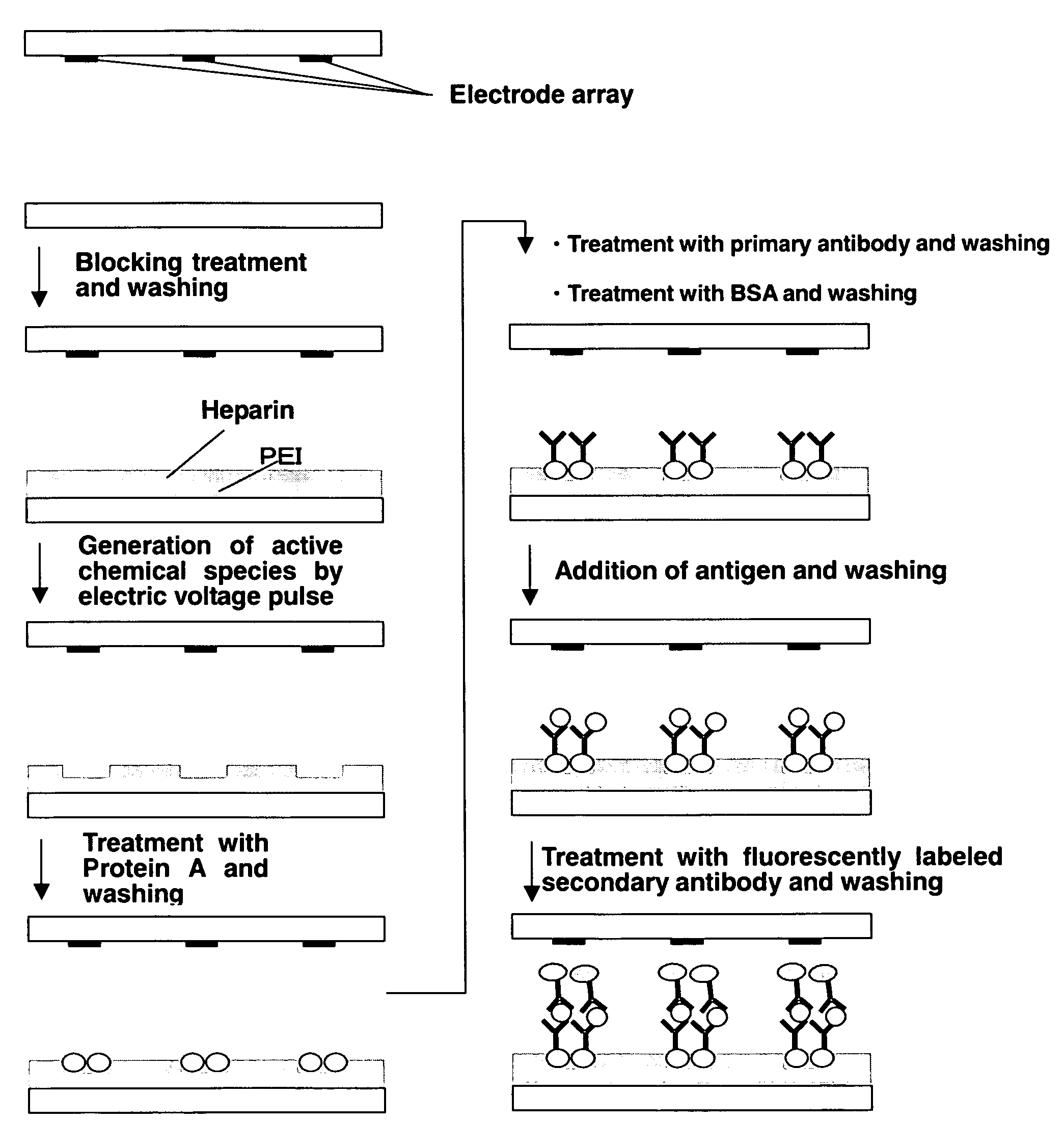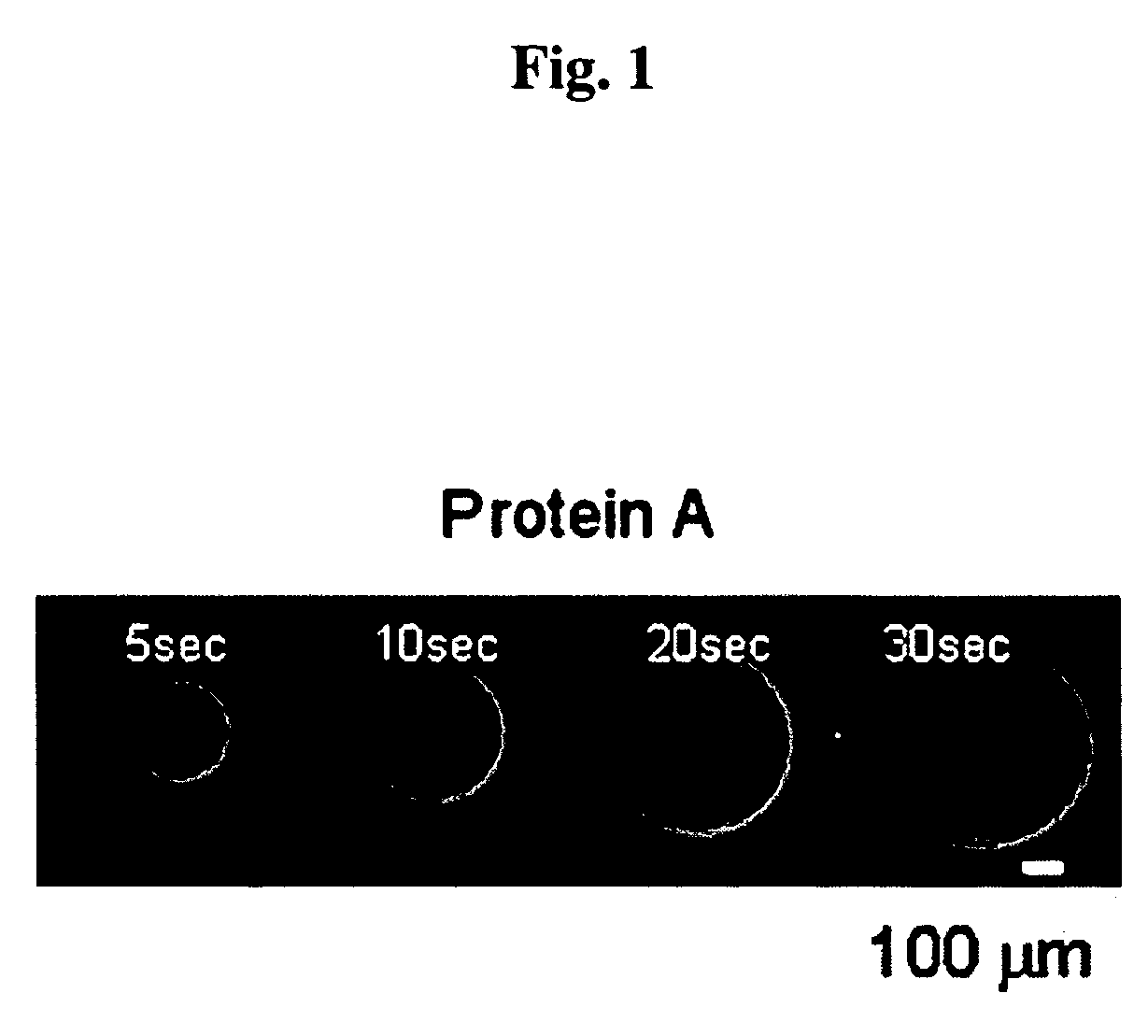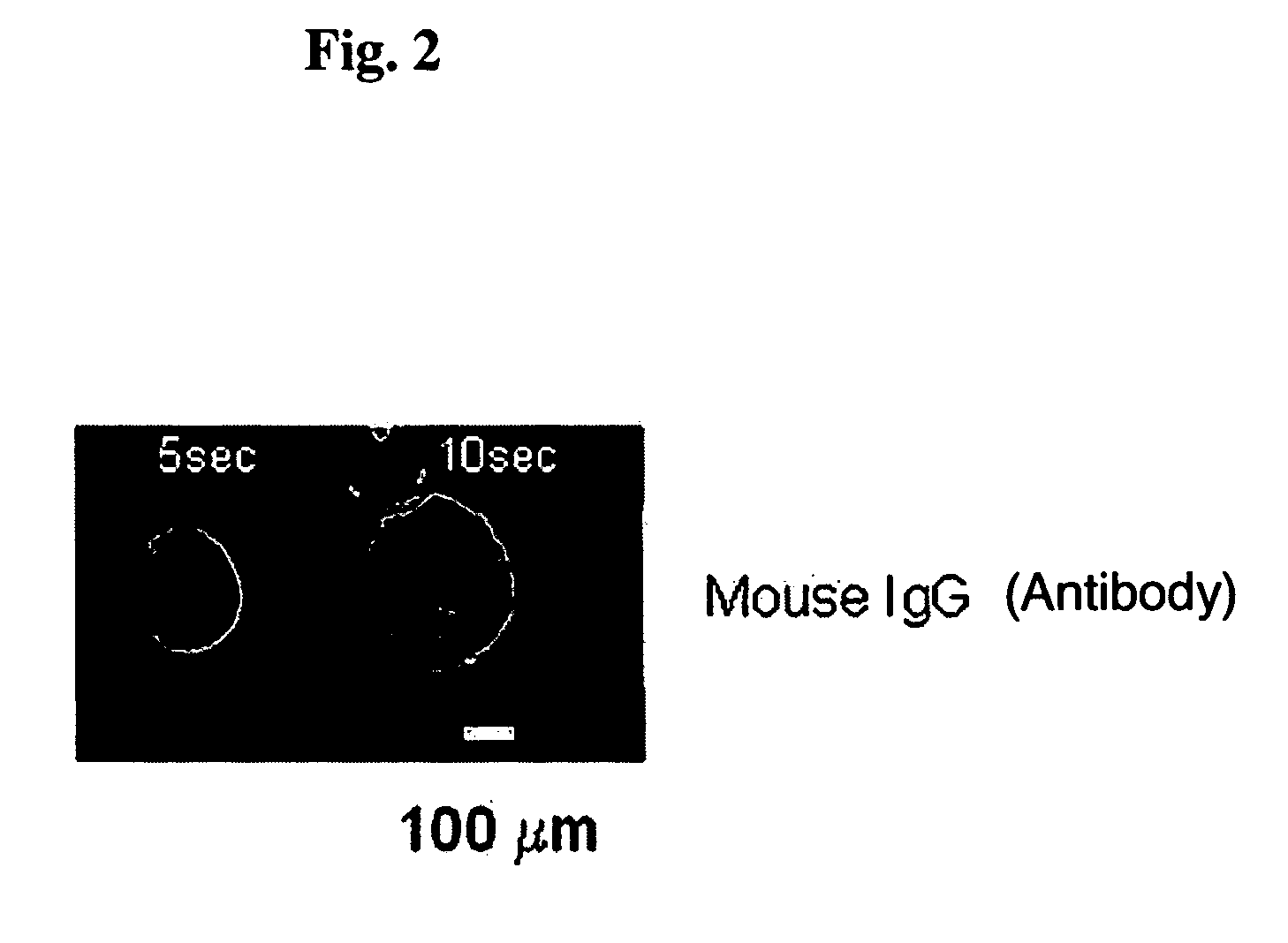Method of Immobilizing Protein, Protein Chip, Method of Immobilizing Cell and Cell Chip
a technology of immobilizing protein and cell chip, which is applied in the field of immobilizing protein, protein chip, method of immobilizing cell and cell chip, can solve the problems of insufficient dna information, inability to stably immobilize protein inability to achieve stably immobilization on a substrate in a similar way, so as to achieve efficient immobilization, prevent inactivation of protein, small-scale
- Summary
- Abstract
- Description
- Claims
- Application Information
AI Technical Summary
Benefits of technology
Problems solved by technology
Method used
Image
Examples
example 1
Use of electrochemical treatment
[0062] In the case where heparin was used as a protein non-adsorptive substance
(1) Pretreatment of substrate
[0063]A glass plate was used as a substrate. This substrate was washed and immersed in an aqueous solution of polyethylenimine (PEI) (10 mg / mL) for 2 hours, whereby a PEI layer was formed. Then, the substrate was immersed in an aqueous solution of heparin (2 mg / mL) for 30 minutes, whereby heparin was immobilized on the substrate surface by the electrostatic interaction and the substrate surface was made non-adsorptive to a protein.
(2) Electrochemical Treatment
[0064]In a phosphate buffer containing 25 mM KBr, a Pt disk microelectrode (electrode diameter: 20 μm) to which bromide ion oxidation potential (1.7 V vs. Ag / AgCl) was applied was positioned near the substrate, and an active halogen species was generated. By this treatment, the PEI layer is exposed in the substrate surface, and functions as a linker layer for a protein which will be immobil...
example 2
Patterning of a Plurality of Types of Proteins
[0069]The operations of (2) and (3) in Example 1 were repeated twice, and two types of proteins were immobilized on the same substrate. Specifically, first, fluorescently labeled mouse IgG was immobilized via locally immobilized Protein A (immersion in a solution of mouse IgG (0.025 mg / mL) for 20 minutes), then, the substrate was immersed in a solution of bovine serum albumin (2 mg / mL) for 30 minutes. Subsequently, Protein A was locally immobilized again, and then, fluorescently labeled human IgG was immobilized (immersion in a solution of human IgG (0.025 mg / mL) for 20 minutes).
[0070]The results are as shown in FIGS. 3(a) and 3(b), and mouse IgG and human IgG could be immobilized on the same substrate, respectively.
example 3
Generation of Active Halogen Species Using Substrate Integrated with Electrode System
[0071]In Examples 1 and 2, an electrochemical treatment was carried out using a Pt disc microelectrode (electrode diameter: 20 μm) juxtaposed to the substrate surface. On the other hand, a method in which an electrode is prepared on another substrate in advance and is faced using a spacer to a glass substrate subjected to a pretreatment in the same manner as in Example 1 (1), and an electrochemical treatment is carried out is desired in some cases from a practical point of view. In addition, generally, it is preferred that a reference electrode which is prepared separately is also loaded on an electrode substrate. In the light of this, as Example 3, it was shown that an active halogen species can be electrolytically generated using only a substrate patterned in which a pair of platinum electrodes were patterned.
[0072]First, as shown in FIG. 4, one electrode of the substrate electrodes was used as a ...
PUM
| Property | Measurement | Unit |
|---|---|---|
| Electric charge | aaaaa | aaaaa |
| Current | aaaaa | aaaaa |
| Adhesivity | aaaaa | aaaaa |
Abstract
Description
Claims
Application Information
 Login to View More
Login to View More - R&D
- Intellectual Property
- Life Sciences
- Materials
- Tech Scout
- Unparalleled Data Quality
- Higher Quality Content
- 60% Fewer Hallucinations
Browse by: Latest US Patents, China's latest patents, Technical Efficacy Thesaurus, Application Domain, Technology Topic, Popular Technical Reports.
© 2025 PatSnap. All rights reserved.Legal|Privacy policy|Modern Slavery Act Transparency Statement|Sitemap|About US| Contact US: help@patsnap.com



